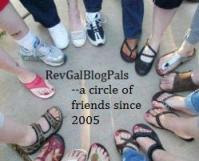Preface: Yes, it’s been forever since I’ve written here. Life in London has been crazy and full and wonderful, and there is much to catch up on. I miss writing, so I am trying to make space for it again, as part of my Lenten practice. If I tried to catch up everything, I’d never get anywhere, so I’m just starting fresh.
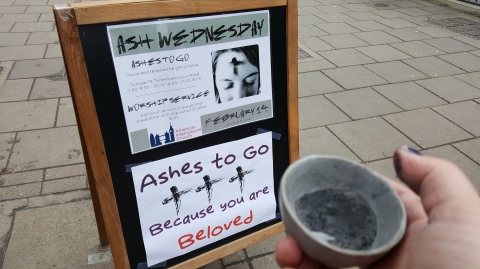 For the third year in a row, I have stood outside our church building on Tottenham Court Road offering Ashes To Go to the thousands of people who pass by. Roadworks almost forced me to cancel this year, but I managed to find a tucked-away corner for two short hours at lunchtime.
For the third year in a row, I have stood outside our church building on Tottenham Court Road offering Ashes To Go to the thousands of people who pass by. Roadworks almost forced me to cancel this year, but I managed to find a tucked-away corner for two short hours at lunchtime.
It’s always a little bit awkward standing out there, with signage, stole, and small dish of ashes in my hand. In a multi-faith, international city, many people have never heard of Ash Wednesday, and stop to ask questions. Others stare, look away, smile, nod. Then a few immediately make eye contact and step right up for the gift of ashes.
This year, though, people also stopped to argue with me. Wearing a clergy collar on a female body, even in London, prompts daily stares and whispers. At least once a week, a stranger comments that they have never seen a woman priest before, or tells me I am wrong to do this work, or asks if I am wearing a costume. I’m used to it. Sometimes, there is even a real moment when eyes are genuinely opened.
I am always armed and ready for these encounters. When two different strangers approached during Ashes to Go to question how I can be a woman in ministry, I challenged them with a perspective they have probably never heard about the scriptures. I do this at least once a week. I know my lines, and they are well-rehearsed.
However, as often happens, both turned argumentative, wanting a long debate over weaponized scriptures. When that happens, I know it’s pointless and just time to get them to go away. However, I also still want to be nice, or at least seem to be nice. I’m supposed to be a good representative for Jesus and his church, and I didn’t want to give them any excuse to call me or my church hostile or dismissive or defenceless against their scriptural interpretation. That means I always spend an extra 2-5 minutes (or more) just trying to extricate myself gently from the conversation and get them to move on.
I felt an acute sense of pain in these lost minutes on Ash Wednesday, as I watched countless other strangers pass by, unengaged. The detractors pulled me away from my purpose. As the second arguer finally walked off, I realised that, in the name of Jesus, I needed to stop wasting my time trying to be nice. With the whisper of the Holy Spirit, a new script appeared in my mind:
“I hear that you want to argue with me about my ministry, but I am not out here to defend God’s call or purpose in my life. I am here to offer the good news of Jesus to people might not hear it anywhere else. You are standing in the way of that work. So you need to move along, and let me get on with the assignment God has given me.”
I felt such a surge of power and authority in this new script, redirecting my energy to my call to connect with those who need to know Christ’s love. With this script in hand, I realised the absurdity of standing on the pavement in front of the very church I serve, with my name on the sign with the title “Senior Minister” next to it, still defending my right to be there.
I was so eager to test my new lines, I almost hoped another interlocutor would appear, but none did. Still, I started rehearsing them for the next time.
The next night, Thursday, I left the office and went directly to an event at my son’s school, still wearing my collar. On our way home, I ended up sitting separately from my husband and son on the bus, and a stranger decided to announce to the rest of the bus that he had never seen a woman priest before, but he knew I was “illegal” and so was my church. I was unfazed, but since I was not actually doing ministry, I reverted to my old scripted lines of defence about “not in my tradition, not in my understanding of Jesus’ love.” My family had never experienced this kind of encounter before. These real-life trolls don’t engage when there is another man to confront. My family’s response was to just get off the bus early and walk. I remarked that if I got off the bus or subway every time that happened, I’d never get anywhere.
Unlike all the other encounters, which I forget as soon as they are over, this one stayed with me last night. Perhaps it was watching my adolescent son react as a random stranger felt entitled to belittle and disparage his mother in public. Perhaps it was the new script for ministry moments from the day before. I realised in that moment how dis-empowering it is even to defend myself, as though these strangers’ opinions–which are usually uninformed and prejudiced and often drunken–entitle them to a thoughtful, compassionate response from me. They don’t.
This morning, I woke up to several social media posts about International Women’s Day, including this perfect (profanity-laden) one from the BBC:
There was also a Twitter meme with the hashtag #takeupspace inviting a feminist Lenten practice of refusing to be small in order to make someone else comfortable. Sit comfortably, use the armrest, cross your legs, throw an elbow on the empty seat next to you. Women have a right to exist in the world and take up space too.
I realised that my very engagement with these folks who simply seek to diminish or dismiss me because I am a woman in ministry actually gives them more time, energy and power than they deserve. I don’t owe them a damn thing, and certainly not a defence or explanation of my existence. I have a right to take up space in public without defending myself or my ministry.
While I don’t think the BBC’s basic “f*ck off” is Jesus-like enough for me, I am drafting a new script.
“I don’t owe you an explanation for my existence. You are not entitled to lecture me about my relationship with God. If you want to inquire about God’s love and grace, I’m here for that. But if you think you have the right to question God’s call in my life, you can take it up with God, not with me.”
It’s not perfect, but it’s an improvement. I’m off to memorise and rehearse my new lines for the next encounter.
Additional note: This also has me reflecting on the daily experiences of people of color, who are harassed, belittled and demeaned in public, in front of their children and colleagues, with an additional threat to their safety. My privilege as a white woman with professional status and resources allows me to be “mouthy” without serious risk of someone calling the police and claiming I am a threat. I might be called a b*tch, but I’m not likely to get hauled off to jail for standing up for my right to ride a bus or go to the park or sit in a coffee shop without being subject to interrogation by a stranger. This privilege often does not extend to men and women of color. I wanted to acknowledge the added layer of racism that only amplifies this struggle for so many. Even as I figure out how to take up my own space, I am also trying to figure out how to use my privilege to support others in taking up their own space too.
Books about Greece
Posted on: January 1, 2019
My ministry connects me with the Association of International Churches in Europe in the Middle East, and the annual conference this year was in Athens, followed by an extension to northern Greece. We visited ancient sites along with tracing the footsteps of Paul’s second journey. I read a host of books in 2018 related to that trip, and the preaching and teaching that emerged from it.
On classical Greece:
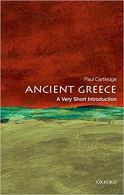 Ancient Greece: A Very Short Introduction by Paul Cartledge, Oxford University Press, 2011, 184 pp.
Ancient Greece: A Very Short Introduction by Paul Cartledge, Oxford University Press, 2011, 184 pp.
The Very Short Introduction series is just as described, and very helpful for a solid, amateur yet sound foundation in any topic. Cartledge takes a chapter for each of eleven Greece cities, unpacking ancient history and major themes in each. It was a very helpful precis before going deeper into topics of interest, and noting highlights of all the cities we saw along the way.
 The Oracle: Ancient Delphi and the Science behind its Lost Secrets by William J. Broad, Penguin Books, 2007, 320 pp.
The Oracle: Ancient Delphi and the Science behind its Lost Secrets by William J. Broad, Penguin Books, 2007, 320 pp.
This was a fascinating read in preparation for a visit to Delphi. The Oracle tells the ancient history of mysticism and worship that happened at the site for millenia with an open mind and sense of awe, while telling the parallel story of a recent scientific quest to explain the power of the Delphic Oracle by a geologist, archeologist and neuroscientist. The book was fun to read, and made the visit to beautiful Delphi even more compelling and fascinating.
 Hellenistic Religions: An Introduction by Luther H. Martin, Oxford University Press, 1987, 170 pp.
Hellenistic Religions: An Introduction by Luther H. Martin, Oxford University Press, 1987, 170 pp.
This was a text in my New Testament class in seminary, but I reread it as a refresher in the many gods, goddesses and cults of Greece and Rome. It covers 800 years of history and worship practices, from 400 BCE to 400 CE, and prepared me to better understand the various temple ruins we saw and interpret their place in the story of religious life in the time of Jesus and beyond.
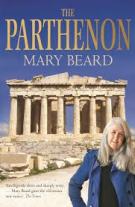 The Parthenon by Mary Beard, Profile Books, 2010, 229 pp.
The Parthenon by Mary Beard, Profile Books, 2010, 229 pp.
Mary Beard was unknown to me in the U.S., but here in the UK she is a household name, a witty classicist and brilliant storytelling scholar. This quick, accessible read tells the history of the Parthenon: its building, decline, destruction and looting from ancient days to the present controversies, including a thorough guide to both the Elgin Marbles here in the British Museum and the new Parthenon Museum in Athens. Reading this ahead of our trip made the day at the Parthenon come alive.
On Paul’s Journeys:
 A Week in the Life of Corinth by Ben Witherington III, InterVarsity Press, 2012, 158 pp.
A Week in the Life of Corinth by Ben Witherington III, InterVarsity Press, 2012, 158 pp.
This is best described as educational fiction. Witherington uses his extensive knowledge of first century Corinth to create a fictional character who interacts with Paul and others there. Events are historical, and there are many insets presenting non-fiction content, but the author’s own imagination fills in conversation and intent. Not my favorite, because it read a bit like a secondary school textbook that is trying to engage young people. Still, it was interesting to have a detailed bit on Corinth for our day there.
 Paul: A Very Brief History by John M.G. Barclay, SPCK Publishing, 2017, 128 pp.
Paul: A Very Brief History by John M.G. Barclay, SPCK Publishing, 2017, 128 pp.
I hoped this would serve as the foundation for an adult Bible study course, but it worked better as deep overview of Paul’s life and writings, including a review of scholarly debates about authorship, timing and biography. It was a good refresher and introductory course to organize my preaching and teaching.
 Paul: A Biography by Tom Wright, SPCK Publishing, 2018, 464 pp.
Paul: A Biography by Tom Wright, SPCK Publishing, 2018, 464 pp.
When you are embarking on an eight-week preaching and teaching series, and Tom Wright publishes a new tome on the subject one month before, you should read it, so I did. At first, I struggled to overcome the informality of the popular biography style, wishing that there were footnotes and arguments to defend Wright’s assertions about character and motive. As I progressed through, I abandoned myself to Wright’s vision and trusted his accumulated knowledge. When I did, I met in his Paul a fascinating, radical, inspiring and inspired man whose passion for Christ extended to the entire world, from ancient days to our own. This offers a unique view on Paul, told chronologically and in third person, rather than by his own letters and the arguments they reveal about the church. I felt a greater kinship with Paul as a fellow preacher, a greater compassion for his faults, and a deeper appreciation for his contribution–along with a better engagement with his world in Greece and beyond.
Fiction:
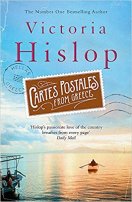 Cartes Postales from Greece by Victoria Hislop, Headline Review, 2017, 448 pp.
Cartes Postales from Greece by Victoria Hislop, Headline Review, 2017, 448 pp.
I love to immerse myself in a good novel about a place I am visiting. This was more a collection of short stories within a novel-like frame. Each story took place in a different town in Greece, which was described in detail. Some of the stories were excellent, some just alright, and the overarching frame did not excite me. However, I enjoyed an insight into modern Greece and Greeks, and it made for good travel reading.
 Outline by Rachel Cusk, Faber Books, 2014, 249 pp.
Outline by Rachel Cusk, Faber Books, 2014, 249 pp.
Like Cartes Postales, Outline is a collection of short stories framed as a novel. However, in this collection, a woman visiting Greece keeps meeting with people who tell her their stories, so everything happens in long, first-person narratives, with a new and distinct voice each time. The stories read with the wistful tone of memoir, and explore the emotional lives of characters more than events themselves. It was beautifully written.
2018: A Year in Books, Fiction
Posted on: January 1, 2019
Hello, long neglected blog! Perhaps some readers are still receiving notifications and will return. Welcome back!
This year has been so full and so busy with good things that I never paused to write about them here. My reflections found expression in sermons and church writing instead. However, as 2019 begins, I am ready to write again–at least about books–so I am starting up my habit of book reviews once more.
I can’t bring myself to skip all the way to the first review of 2019, so this is a bit of a catch-up list from 2018. I did manage to write reviews for the first few months of the year, but then I started a lot of reading and very little writing that continued until now.
A whole subset of this year’s reading involved a trip to Greece and related books, which is what caused me to get tripped up in the first place. Those are listed in their own post.
First, the fiction.
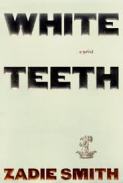 White Teeth by Zadie Smith, Random House, 2000, 448 pp.
White Teeth by Zadie Smith, Random House, 2000, 448 pp.
I enjoyed White Teeth shortly after it came out, but I wanted to read it again as a Londoner, as it is considered an iconic novel of contemporary London life. I agree! I understood it much more now that I inhabit this diverse city, and enjoyed recognizing familiar places and types of people. Whether you know London or not, though, White Teeth is worth a read.

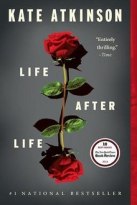 Life after Life and A God in Ruins by Kate Atkinson, Black Swan, 2014 and 2015, 640 and 460 pp.
Life after Life and A God in Ruins by Kate Atkinson, Black Swan, 2014 and 2015, 640 and 460 pp.
The two-part Todd family series tells the narrative of life in 20th century Britain, though both novels play with the reader’s ideas about linear time. Life after Life tells the story of Ursula Todd, who keeps being reborn over and over again, seemingly until she gets it right–managing her own longevity and protection for the lives of others. The London Blitz features prominently. A God in Ruins tells the story of Ursula’s younger brother Teddy, the family favorite and an RAF pilot who flew many dangerous missions. While he does not have his sister’s habit of reincarnation, the narrative does move about through Teddy’s past, present and future simultaneously. Good stories, well told.
 Retaliation in Kind by Kathryn Allen, Vantage Press, 1994, 343 pp.
Retaliation in Kind by Kathryn Allen, Vantage Press, 1994, 343 pp.
Kathy is a clergy friend I knew Kentucky, who came to the ministry after retirement from the Marine Corps. When we were saying our goodbyes before I moved, she gave me a gift: “Just a book I wrote back in another life.” (!!??!!) This international spy thriller draws on her days in the Marines and her own imagination about military intelligence to weave a brilliantly entertaining spy story. Though the geopolitics have shifted dramatically in the last 20 years, it is still an entertaining story.
 We Are Water by Wally Lamb, HarperCollins, 2013, 562 pp.
We Are Water by Wally Lamb, HarperCollins, 2013, 562 pp.
This is just the sort of story I have come to expect from Wally Lamb: long, wrenching, emotional, full of human brokenness and depression. The story here involves divorce after a long heterosexual marriage and a new engagement between the former wife and her new female partner; a history of childhood violence and sexual abuse (trigger warning); the ex-husband seeking a new life, and the adult children in the middle. All of this is set into a backdrop of artists and art dealers, New England now and in the days of segregation, with a few ghosts thrown in for good measure. It was chilling and disturbing, as Lamb always is, though I did not think it was his best.
London by Edward Rutherfurd, Arrow Books, 1997, 1302 pp. 
I’m still reading my way through all kinds of books that help me learn the stories of my new home. This novel traces families across generations, from Roman times through the Blitz, often skipping a century or more to pick back up generations later. Consequently, it feels like a period collection of short stories with common threads by name and sometimes occupation or location. The book is quite a commitment, but Rutherfurd provides entertaining and interesting stories to imagine happening around town in ages past.
 Wuthering Heights by Emily Bronte, Bantam Classic edition, originally published 1847, 315 pp.
Wuthering Heights by Emily Bronte, Bantam Classic edition, originally published 1847, 315 pp.
Recovering from my final cancer surgery this year, I spent hours every day walking on Hampstead Heath, near our home. Naturally, I was reminded of Heathcliff and Catherine, though the moors they haunted are far to the north of here. I read Wuthering Heights as a teenager and loved it, so I looked forward to the return. I discovered that Victorian dramas capture something of the passion of youth, and my middle-aged self had far less interest in the swooning, all-consuming love and hatred of these characters. Still, it was good to return to a classic.
 A Dark Nativity by George Pitcher, Unbound, 2017, 335 pp.
A Dark Nativity by George Pitcher, Unbound, 2017, 335 pp.
I stumbled into this book by accident in December 2017, and bought it to read during Advent 2018, thinking by title and plot summary about an aid worker in the Middle East would connect the Christmas story to the plight of modern refugees. Wrong. Instead, it was a spy novel about an aid worker turned Anglican priest, caught up in international intrigue. Entertaining, but not something to draw upon for sermon illustrations.
 The Refugees by Viet Thanh Nguyen, Grove Press, 2017, 207 pp.
The Refugees by Viet Thanh Nguyen, Grove Press, 2017, 207 pp.
For someone who doesn’t usually read short stories, I’m noticing that this is the fourth book in 2018 in this genre, though the other four have a frame story to classify them as novels. The Refugees is everything I love about reading fiction: powerful prose, engaging characters, emotional depth, and a glimpse into worlds I would not otherwise know. Each of Nguyen’s stories tells about the life of a Vietnamese refugee adapting to life in California, unpacking a whole world familiar to all immigrants, yet deeply particular and contextual to this group arriving 40 years ago. I felt like I was meeting real people I may have passed on the street. One of the best books I read all year, and especially worth reading as we work to address the needs of migrants in the U.S. and the UK, currently experiencing displacement and harsh treatment by government authorities.
 The Librarian by Salley Vickers, Penguin Books, 2018, 385 pp.
The Librarian by Salley Vickers, Penguin Books, 2018, 385 pp.
I got suckered by the advert. Named by Waterstone’s as Book of the Month in November 2018, it was described as the story of a children’s librarian saving young lives by the power of books in the early 1950s. I couldn’t resist buying it. I don’t regret the purchase or the time reading it, but it wasn’t especially memorable. A love story, a love of books (most of which, because they were published in Britain before 1958, I did not know), and children changed by reading, all in solid prose, with a restrained, subtle style that felt very British. Good book for tucking in on a holiday with a warm blanket.
John Dominic Crossan, Jesus: A Revolutionary Biography, A Startling Account of What We Can Know about the Life of Jesus, New York: HarperOne, 1994, 232 pp.
 As Holy Week approaches, I want to immerse myself in the story of Jesus, to walk with him and imagine his life and personality. I find myself looking many years for something to read that will further that effort. This book was originally purchased to read on my trip to the Holy Land in 2012, but I never got around to it. Too late for the Holy Land, but right on time for Holy Week six years later–24 years after its publication.
As Holy Week approaches, I want to immerse myself in the story of Jesus, to walk with him and imagine his life and personality. I find myself looking many years for something to read that will further that effort. This book was originally purchased to read on my trip to the Holy Land in 2012, but I never got around to it. Too late for the Holy Land, but right on time for Holy Week six years later–24 years after its publication.
Crossan is a leading member of the Jesus Seminar and historical Jesus movement. This book was a shortened version of his more scholarly work examining what we can actually know and prove from history about Jesus of Nazareth. I suspected that I would discover much of the content of this book had been reshaped and rehashed in later Crossan works about Jesus, including God and Empire. However, I was pleasantly surprised to find much of the material was new to me, and the approach offered me a fresh, updated look at Jesus as I approached my Holy Week services.
Over the years, Crossan, Borg and other Jesus Seminar scholars have softened their approach. Their original attempts to segregate the Jesus of history from the Christ of faith drew hard-edged lines, yet in spite of the fact that this book comes from that era, it is clear throughout that Crossan (himself a Catholic priest) is devout in his faith and dedication to Jesus. He seems less interested in destroying a traditional view than in painting a more accurate picture.
The hard scholarly edge remains in his sourcing. Crossan shapes a story of Jesus that relies on the biblical accounts as the least reliable sources, positing only those aspects of Jesus that are attested in non-biblical sources and situating him thickly within the politics and culture of first-century Roman Palestine. While it is still disconcerting to read from time to time that Crossan believes some of my favorite New Testament narratives are pure fiction (including the Last Supper), I’ve heard those arguments many times now and breeze right past them to the more interesting elements–the consistent elements of Jesus’ identity, ministry and practices that are attested in both biblical and non-biblical sources, and make sense within the sociological and political world he inhabited.
Crossan’s Jesus is a peasant leader from Galilee, whose ministry is for the peasant classes of that region. One of the most interesting chapters is “The Jordan is Not Just Water,” in which he examines the political implications of baptizing people in the Jordan River, symbolic of entry into the Promised Land. He also articulates his well-known connection of Jesus and the Cynics, carefully charting what Jesus borrows and changes from their practices. Crossan affirms some core practices that remain central to both the Jesus of history and the Christ of faith: his dedication to a “kingdom of nobodies,” the sharing of radical meals free of social distinction, the breaking of boundaries.
The chapters on the body and the cross spoke to me powerfully during Holy Week. Both spoke to the harshness of life in the Roman colony, with rampant death from disease and violence alongside social death and expulsion based on fear and superstition. Both chapters spoke about human bodies and Jesus’ body–their real pain and suffering, the exposure and mutilation of the cross, and the social alienation of victims of state terrorism by crucifixion, whose bodies usually could not be buried and were left to the dogs. The stories made Jesus seem very small, vulnerable and invisible within his world, like thousands of others—yet thanks to his disciples, his witness was unique enough to have survived.
This was a good refresher for me on the Jesus of history, and offered insights and perspectives that were new to me, even though the book is more than 20 years old.
Book Review: The One About…
Posted on: April 2, 2018
Mark Greene, The One About… Eight Stories about God in Our Everyday, London Institute for Contemporary Christianity, 2018, 66 pp.
 This is more of a booklet than a book, but I wanted to include it here to give it credit as a potentially very useful tool. I read it in a single sitting, and keep returning to imagine how to use the book or its concept in my congregation.
This is more of a booklet than a book, but I wanted to include it here to give it credit as a potentially very useful tool. I read it in a single sitting, and keep returning to imagine how to use the book or its concept in my congregation.
The book is intended to be a working tool for use to spark conversation and engagement with ordinary Christians about how God is at work in their lives. However, it is descriptive instead of prescriptive in its approach. As advertised, it simply contains eight short stories about how people practice their faith in their work life. None of them are clergy or professional church staff–all work traditionally secular jobs, across a variety of class and educational backgrounds. For example, a hairdresser prays for her clients as she massages the conditioner into their hair, and a manager listens to all his employees and develops a caring and compassionate relationship with each one. The book doesn’t just tell the stories as examples, however–it inserts questions, scriptures and tools for reflection so that the reader is prompted to imagine how they can mimic the example in the story in their own work and life. The stories are true, though names have been changed, and they are relatable.
I am imagining how to use the stories with a small group, or encourage people to read them and host a conversation about how people in my congregation engage their faith in their workplaces, to elicit their own stories and share with one another. The London Institute for Contemporary Christianity does interesting work in this area, and I am grateful for this latest resource.
Susan Howatch, A Question of Integrity, London: Warner Books, 1997, 680 pp.
Susan Howatch, Glittering Images, London: Harper, 1987, 504 pp.
 These novels were a gift from a church member, who shared that they were her favorite books. She prayed for me diligently during my treatment, and often at St. Marylebone Parish Church, whose healing ministry provided the inspiration for one of the churches in the stories. I didn’t get a chance to read them during treatment, so I am catching up.
These novels were a gift from a church member, who shared that they were her favorite books. She prayed for me diligently during my treatment, and often at St. Marylebone Parish Church, whose healing ministry provided the inspiration for one of the churches in the stories. I didn’t get a chance to read them during treatment, so I am catching up.
Glittering Images is the first in the five-volume Starbridge series, and A Question of Integrity is the first in the St. Benet’s Trilogy. I read them back-to-back, and they were similar enough for me to decide to write one review instead of two. Both novels feature lead characters who are male clergy in the Church of England with have strong intuitive, if not psychic, powers that they deploy in their ministry. The stories explore how these powers work for good in their healing work and even exorcisms, but the bulk of the plot in both books comes from the clergy’s more sinister desires, especially around sex. Glittering Images uses the metaphor of a public “glittering image” that masks a true self mired in desire, unfulfilled longing, and wounds of old relationships with family and lovers. A large part of the content of both books consists of conversations and monologues with the main characters (clergy and non-clergy) baring their souls to one another or a spiritual director, narrating therapy sessions where they construct a catalogue of their desires, sins and secrets.
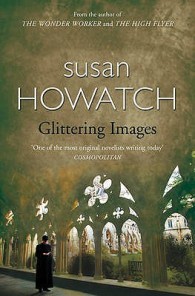 Glittering Images is set around the fictional Starbridge Cathedral and surrounding area, in the late 1930s. Scholar-priest Charles Ashworth is sent as a spy by the Archbishop of Canterbury to discover any improprieties in the living arrangements of the Starbridge bishop, Jardine, who shared his home with both his wife and her female companion. Ashworth and Jardine become entangled with one another’s secrets, lovers and desires as they both must confront their twisted interior lives against the respectable public personae.
Glittering Images is set around the fictional Starbridge Cathedral and surrounding area, in the late 1930s. Scholar-priest Charles Ashworth is sent as a spy by the Archbishop of Canterbury to discover any improprieties in the living arrangements of the Starbridge bishop, Jardine, who shared his home with both his wife and her female companion. Ashworth and Jardine become entangled with one another’s secrets, lovers and desires as they both must confront their twisted interior lives against the respectable public personae.
A Question of Integrity takes place in the late 1980s in London, in a fictional parish whose healing centre is modeled on St. Marylebone Parish. Descendants of the characters from Starbridge appear as well. There are five main characters: Alice, a young woman in crisis attended by the healing ministry, who joins the staff and becomes a healing presence to all; Lewis, a cantakerous older priest with a dodgy past trying to live a pure and celibate life and use his psychic powers for good; Nicholas Darrow, a dashing superstar healer with enormous powers and a dangerously inflated sense of his own moral compass; Rosalind Darrow, his wife who seeks her own way apart from him; and Stacy, a young curate trying to sort out his own identity and missing his family. The narrative is told it five sections, with each character narrating one in first person (except Stacy, Alice gets two), each battling with their own sexual desires.
I was intrigued enough by the first book to immediately read the other one, but I am doubtful if I will continue with either series anytime soon. I think the stories attempt to portray the lives of the clergy in a way that humanizes them, but in the end made them seem extreme in both their gifts and their sins, which makes them even larger than life. Also absent are the lives of women in ministry, who always draw my interest far more strongly. The clergy in the stories are all redeemed in the end by their efforts at honesty, self-disclosure and truth-telling.
Why I Love Ministry #2453
Posted on: March 16, 2018
- In: London | Ministry Moments | Reflections
- 1 Comment
Hopefully you can tell that, even though the work of ministry is hard and demanding much of the time, I love it. This week, I got to experience one of the thousands of reasons why:
Because ministry puts us in all kinds of places, with all kinds of people, with both openness and obligation to invite real, deep conversation about things that matter.
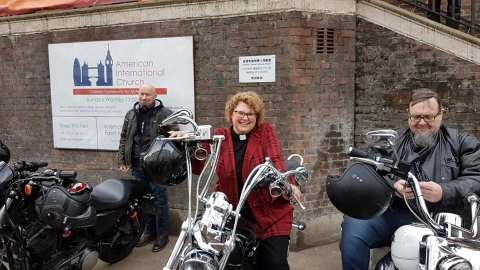
Also, I got to sit on a Harley Davidson.
In the last three days, I have had meetings or substantial conversations with:
- A community organizer about engaging our church in the work of growing a public voice in Central London
- A homeless member of our congregation about helping provide a security deposit for permanent housing
- The leader of a local neighborhood association about the redevelopment of our block, including potential business partners who might help with our own building improvements
- A church member who, in spite of a year full of her own challenges, agreed serve in a leadership position in the congregation
- A bright, engaging guest in our weekly night shelter who is a recent arrival from Africa with no money, no right to work, and no recourse to public funds, who wanted to learn more about Christianity beyond his Roman Catholic upbringing
- The producer of a West End musical renting our space for rehearsal and a preview night, about our shared perspectives on the creative process and leading audiences/congregations into a moving experience
- The Harley-Davidson bikers who came to display their bikes in front of the church for the preview event, about the differences between Judaism and Christianity, the U.S. military in the UK and U.S. politics
- A couple who won tickets to the preview on a radio show, about how they spend all their free time and resources going to live concerts, which is a spiritual experience for them
- The head of my son’s international school, about diversity, social justice, and how our institutions find ourselves in similar moments of change and adaptation, as London shifts around us.
- A church volunteer at the night shelter about a difficult situation at home, for whom I was able to offer a referral for outside support
- An actor in the West End show, about his rural home and the tiny chapel only accessible by horse or foot, to which he goes to find holy peace
And those are just the significant conversations, lasting more than a few minutes or touching deeper notes of spiritual and community life. There were plenty of other conversation with staff, church members, Soup Kitchen guests, night shelter guests, theatre guests and members of the public, all week long.

Theatre cast, bikers, commuters, night shelter guests and volunteers, media and DJs, radio contest winners, church choir members, crew and more, all mingling in front of the church
Aside from the church, it’s hard to think of another organization that breaks so many boundaries and brings together people from so many diverse walks of life. While the great privilege of ministry is the ability to stand in these intersections every day, the even better truth is that anyone can join in. The church community offers anyone and everyone a chance to gather with all kinds of people, in all kinds of places, with both openness and obligation to invite real, deep conversation about things that matter.
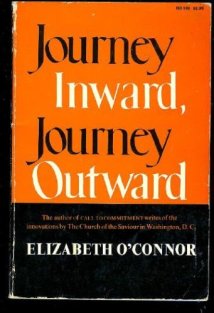 Journey Inward, Journey Outward by Elizabeth O’Connor, HarperSanFrancisco, 1968, 176 pp.
Journey Inward, Journey Outward by Elizabeth O’Connor, HarperSanFrancisco, 1968, 176 pp.
I was introduced to Elizabeth O’Connor in my first semester of university, when I attended a retreat for those interested in exploring ministry as a vocation. (I was supposedly there as a music leader, not a candidate for ministry, but, well, you can see where that went.) A workshop leader used multiple passages of her Cry Pain, Cry Hope that have stuck with me ever since.
There is an ongoing conversation within my ministry colleagues about the crucial role of discipleship and faith formation, and the “competition” between time or investment as churches in acts of justice and compassion and acts of prayer, worship and study. I am firmly committed to the church’s mission and advocacy endeavors, but believe they require investment in the work of discipleship, shaping our inner lives in the mind and heart of Christ. The movement can work both ways–engagement in outward works of compassion and justice can lead us toward inward works of devotion, and inward works of devotion can lead us toward outward acts of social engagement. But it can be a struggle to sort through the balance, and engage those who think one side or the other is more important.
As I am preaching a Lenten sermon series on spiritual practices, including both inward and outward ones, this seemed like an apt time to seek O’Connor’s wisdom in a new arena, even though this book is old and set in a different era.
Journey Inward, Journey Outward is the second volume (the first was Call to Commitment) of the story of the Church of Our Savior in Washington, DC, an intentional, missional Christian community in the 1960s led by Rev. Gordon Cosby. The congregation has sought with care and great deliberateness to develop disciples of Jesus governed by inward habits of prayer, worship and communal living, engaged in outward practices of mission. As always, O’Connor’s gifts as a writer give voice and perspective and ways of framing that capture my thoughts and inspire deeper reflection.
She begins with a conversation about vocation, the way of intentionality and consciousness of God at work in our lives. She describes those without vocation, comparing them to the crowd surrounding Jesus (as opposed to the disciples):
They do not receive anything into themselves; things happen to them, but never in them. Their lives are rich in outer events, and poor in inner ones. (5)
The person who has lost his true self has a hunger in him. It may be expressed in apathy or industry. He may try to satisfy it with a job he works at 14 hours a day, or a family that is ‘everything’ to him, or success that is worth all striving, or the acquisition of things, of which there is no end of want. But there is nothing to fill the emptiness of the one who is not following the way of his own inner being. (7)
This is exactly the kind of pain I see so often in the people I meet every day, most of whom are “good people,” dedicated to serving others and trying to live rightly. Yet there is a pain, an alienation, a loneliness, a “God-shaped hole,” as some would say. More outward action and good works will not fill the void. More, it is not the way of Christ.
O’Connor says that the journey inward involves three engagements:
- The engagement with oneself — moving toward self-knowledge, plumbing the depths of our own consciousness
- The engagement with God — from St. Teresa: “We shall never succeed in knowing ourselves unless we seek to know God.” Prayer, both in daily life and in time apart, along with study and spiritual disciplines
- The engagement with others — a real commitment to friendship and relationship with others, even when it is difficult
She summarizes the whole thing here:
If engagement with ourselves does not push back horizons so that we see neighbors we did not see before, then we need to examine the appointment kept with self. If prayer does not drive us out into some concrete involvement at the point of the world’s need, then we must question prayer. If the community of our Christian brothers (and sisters) does not deliver us from false securities and safe opinions and known ways then we must cry out against that community, for it betrays. (28)
The inward must not be sacrificed to the outward, nor the outward to the inward. There is no transformation that way. (30)
That’s what it’s all about–transformation. If we are about the work of Christ, it is always transformation that we seek, and that requires both inward and outward engagements.
The remainder of the book gives practical insight and stories to the way Church of Our Savior has endeavored to live these practices in their life and work together. Specifically, they organize mission groups for all members that practice both inward-looking prayer and worship together and outward-looking engagement in service and justice in the community. The stories O’Connor tells speak of remarkable transformation, in both the communities they serve and the individuals who have opened their lives to God in this way: an army captain turned potter and artist; a homeless shelter for children emptied as children are placed in homes; a coffee shop become worshiping community. Each remaining chapter unpacks the story of a mission group, recounting its many challenges and small victories on both the inward and outward paths.
A few remaining treasures from her writing to share.
After discussing the role of risk-taking in the Coffee House community, and the importance of taking risks as part of the life of faith, she talks about the safety they found to take risks:
The safety was not in protection from ‘slings and arrows,’ but in a group of people who, however poorly they might embrace it, had as the basis of their life in Christ an unlimited liability for one another. (84)
The image of having “unlimited liability for one another” is worthy of further exploration and reflection.
She recounts the exploration of faith in the church’s education program, and in particular one person’s account of the role of Gordon Cosby in inspiring their faith. Quoting this individual:
“I knew that this was a man of faith, and that he included in it the faith that I could have faith. I became expectant myself, and when I became expectant, things began to happen for me.” (105)
There is something true and holy in this explanation of ministry. We hold faith that others can have faith, that God is at work in their lives. Even when we have doubts, the role of pastor and our presence with them represents that to people. And that simple presence and faith of expectation opens the way for people to believe for themselves that God is at work in them.
Dr. Cosby’s education session included three relationships that each of us need if we are to be growing in faith.
- We need those who are further along the way, who give us hints of where we are and raise the question of where we are going.
- We need those who are our peers–fellow pilgrims with whom we share the day-by-day events of our life in Christ
- We need those who are not as advanced as we–a little flock which is ours to tend and nourish (110)
While I resist the notion of being “advanced” in faith, it is true that there is wisdom and excellence in practice developed over time, and helping others navigate terrain that you yourself have already traversed is important to one’s own continued growth.
In spite of its age–some of the book is very 1960s–O’Connor’s writing and perspectives on the spiritual life and the inward and outward journeys remain insightful. If you are curious, you can usually find a used copy of O’Connor’s works online at Alibris. (I know because I have lent out Cry Pain, Cry Hope a few times and had to replace it.)
Book Review: Silence
Posted on: March 2, 2018
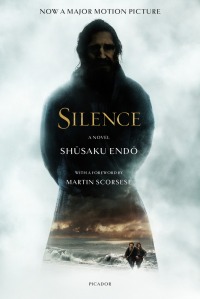 Silence by Shusaku Endo, London: Picador, 1969 (English translation, original Japanese published in 1966), 267 pp.
Silence by Shusaku Endo, London: Picador, 1969 (English translation, original Japanese published in 1966), 267 pp.
I had not heard of this book until the Martin Scorese movie came out a few years ago. Ever since, I was intrigued, thinking that the story said something that mattered to me as a pastor myself. However, I knew the content involved cruelty and torture, and I could not bring myself to be haunted by images. The book was the way to go, so my imagination could both connect and disconnect as my mind and heart could handle.
Silence is, at face, a story about the secret Christian missions to Japan in the early 17th century, and the Japanese Christians that survived persecution. However, it is really a story about what the Christian faith means, what it means to profess your faith versus live its values, and what courage and faithfulness looks like when those two things collide.
The story revolves around Sebastian Rodrigues, a Jesuit priest, who makes his way to Japan full of passion and youthful self-confidence, but also curiosity, to hear of a beloved mentor who is reported to have apostatized. Christianity is illegal, but Rodrigues is aided by secret Japanese Christians before he and they are caught and tortured, with tricks and twists to encourage them to apostatize.
Endo’s writing is powerful, and the inner journey of Rodrigues compelled me as a reader to my examination of conscience.
A few passages that spoke to me:
We priests are in some ways a sad group of men. Born into the world to render service to mankind, there is no one more wretchedly alone than the priest who does not measure up to his task. (22)
A chilling bit of foreshadowing in the novel, but a truism to the heart of any pastor–for none of us truly measure up to the task set before us.
Reminiscent of Romans 5:6-8, and worth remembering as a restatement next time I preach on that passage:
But Christ did not die for the good and beautiful. It is easy enough to die for the good and beautiful; the hard thing is to die for the miserable and corrupt–this is the realization that came home to me acutely at that time. (47)
The silence of the book’s title has many layers in the story, but one of the frequent ones is the silence of God in the face of suffering. Endo writes powerful of the feeling of God’s silence in several passages.
Behind the depressing silence of this sea, the silence of God… the feeling that while men raise their voices in anguish God remains with folded arms, silent. (79)
On sin, with the distant context of the missionary’s missteps in an unfamiliar culture:
Sin, he reflected, is not what it is usually thought to be; it is not to steal and tell lies. Sin is for one man to walk brutally over the life of another and to be quite oblivious to the wounds he has left behind. (114)
Silence is a beautiful, powerful novel. Although it telegraphed early how the story was likely to unfold, and the moral choice Rodrigues would face, the looming knowledge only made Rodrigues’ surprise and naivete more evident. This would make an excellent book for discussion in a group, especially a group of people that sees themselves as servants or missionaries or ministers to others on behalf of Christ, and wants to explore questions about their assumptions and impact.
Strength for the Journey: A Guide to Spiritual Practice by Renee Miller, New York: Morehouse Publishing/CREDO Institute, 2011, 134 pp.
 This tiny little volume contains tiny little introductions to 20 different spiritual practices, along with a rubric for introducing and beginning each one. It is produced by the CREDO Institute, which runs the CREDO program of mid-career personal, spiritual and vocational development for clergy in the a variety of mainline denominations.
This tiny little volume contains tiny little introductions to 20 different spiritual practices, along with a rubric for introducing and beginning each one. It is produced by the CREDO Institute, which runs the CREDO program of mid-career personal, spiritual and vocational development for clergy in the a variety of mainline denominations.
The book is intentionally lightweight and light reading. The 20 spiritual practices are grouped into five categories: Meditative Practice, Ministry Practice, Media Practice, Mind Practice and Movement Practice. Each section and each practice begins with a beautiful and simple color photograph, which invites you to slow down your reading for information and simply reflect on the invitation into spiritual practice. The author follows a formulaic approach to each one, offering a brief rationale for the gift and struggle of that particular practice; practical suggestions for how to begin to engage the practice and what to expect in the discipline; concluding with a short observation about what personality types will be draw to or resistant to a particular practice, and the stumbling blocks each might encounter.
I especially appreciated the inclusion of both ancient, traditional practices and contemporary, creative ones. Alongside praying with beads or praying the daily office, there is attention to technology, even movies as a possible spiritual practice. Movement practices do not just include walking and nature, but handwork. Ministry practices of hospitality and caring are joined by spiritual attention to money and gratitude.
Miller’s reflections made me want to try a few practices I had not sampled or engaged with any depth. She spoke with an honesty about the difficulty and reward (or lack thereof) of spiritual practice, emphasizing that it is not about obtaining a certain feeling or holiness, but about the way the practices take root in your life and shape you by the discipline you exercise in doing them to give attention to God. Her whole style had a sense of encouragement and accessibility I appreciated greatly.
I will be returning to this book throughout Lent, as I am preaching a sermon series called “A Lived Faith,” which is about inviting people into a life of spiritual practices, with a particular focus on those practices that we, as a congregation, should embody in an international, expatriate context. This is a book easily read in one sitting, but best consulted and savored slowly and spaciously.

